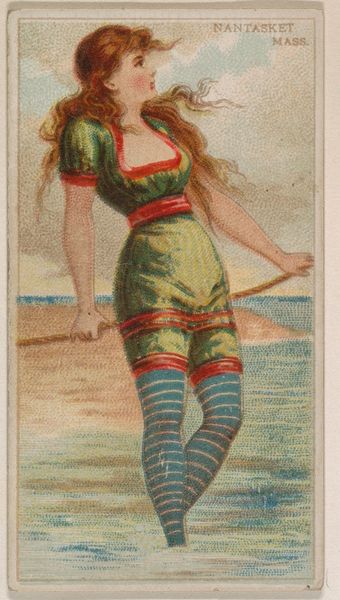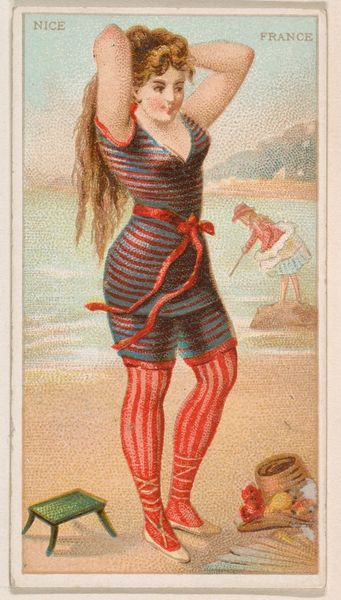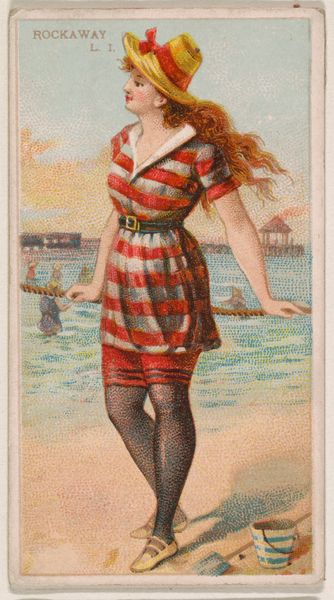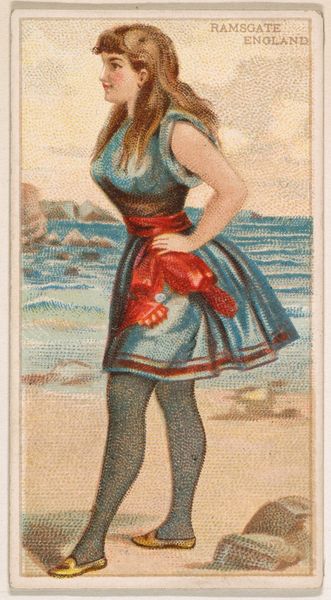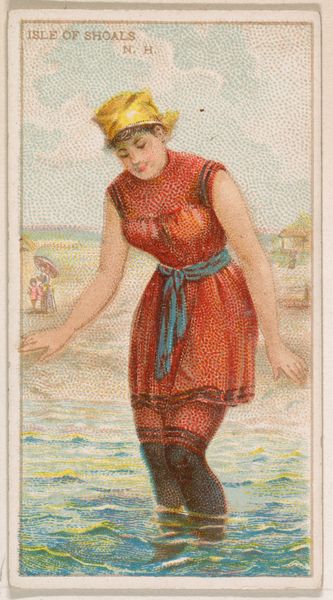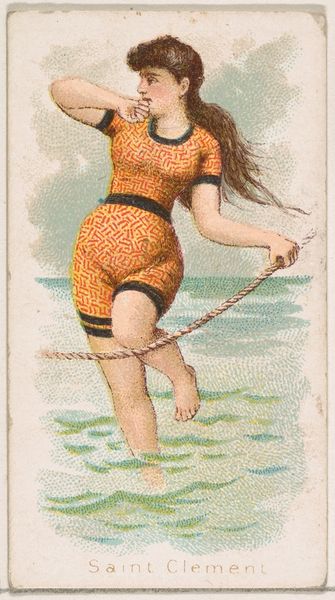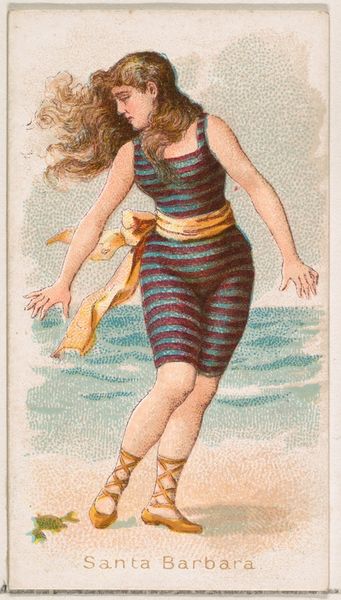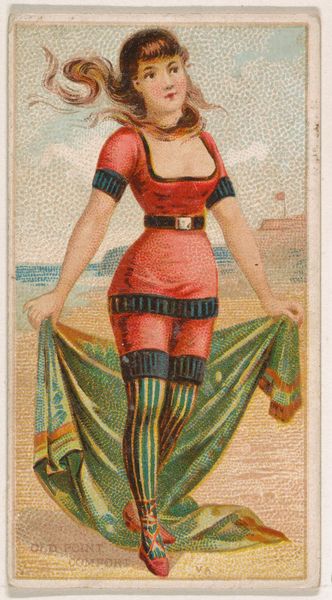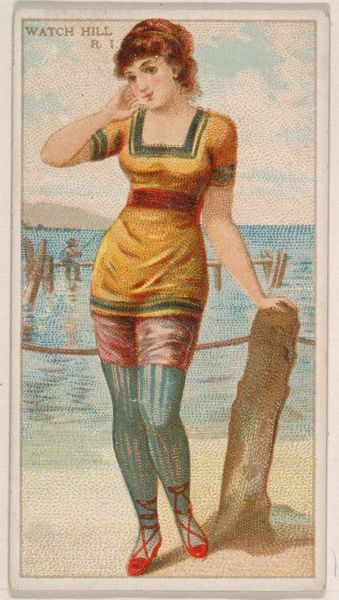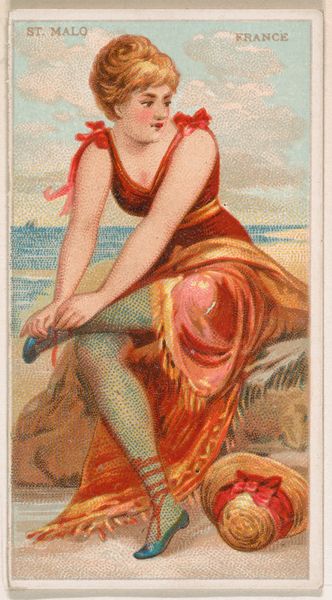
Coney Island, from the Surf Beauties series (N232), issued by Kinney Bros. 1889
0:00
0:00
drawing, print, photography
#
portrait
#
drawing
#
toned paper
# print
#
impressionism
#
figuration
#
photography
#
men
#
watercolour illustration
#
genre-painting
Dimensions: Sheet: 2 3/4 × 1 1/2 in. (7 × 3.8 cm)
Copyright: Public Domain
Curator: Here we have "Coney Island, from the Surf Beauties series," issued around 1889 by Kinney Bros. It's currently held at the Metropolitan Museum of Art. Editor: My first impression is a wistful sense of late-19th-century leisure. The red and white striped bathing suit against the speckled tones creates such an interesting texture. Curator: Kinney Brothers was, of course, a tobacco company. These cards were included in cigarette packs as a promotional item. It's fascinating to consider how tobacco and leisure culture were intertwined. Editor: Absolutely. It speaks to a society structuring itself around emerging forms of mass production and consumption. The illustration style itself suggests something machine-made; notice that stippling effect attempting to evoke Impressionist painting but also achievable through printing. What kind of materials were they using to create this effect? Curator: Good question. Most likely chromolithography, which allowed for relatively cheap and colorful reproductions, perfect for mass distribution. The "Surf Beauties" series speaks volumes about idealized femininity in the late 19th century, reflecting trends and aspirations circulated by such promotional means. Editor: Indeed. The artist—though we don't know their name—made interesting choices. The woman's gaze is so direct, almost challenging. The materials give us hints on mass-produced pin-ups and this staccato drawing effect must've produced an otherworldly, almost artificial depiction for its contemporary audience. It suggests labor processes too, thinking about how many of these were printed and dispersed! Curator: Exactly, she's both alluring and slightly defiant, embodying the evolving role of women in public spaces. Think of Coney Island itself, becoming this new space for entertainment and freedom. The card becomes a tiny window into that bigger shift, showing evolving ideals on who and what could be consumed in the American cultural imagination. Editor: Yes. So, what started as commercial ephemera provides so much insight into gender, class, labor, and materiality of a past society! Curator: It’s really interesting to see what one small mass-produced artwork like this can tell us about how pleasure and cultural narratives converge in a particular historical moment.
Comments
No comments
Be the first to comment and join the conversation on the ultimate creative platform.

